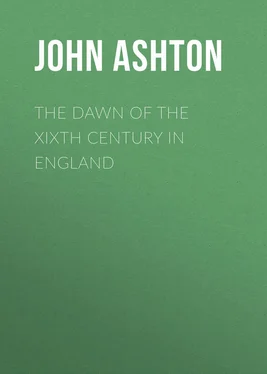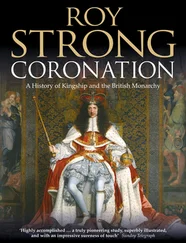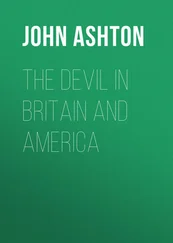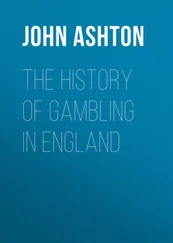John Ashton - The Dawn of the XIXth Century in England
Здесь есть возможность читать онлайн «John Ashton - The Dawn of the XIXth Century in England» — ознакомительный отрывок электронной книги совершенно бесплатно, а после прочтения отрывка купить полную версию. В некоторых случаях можно слушать аудио, скачать через торрент в формате fb2 и присутствует краткое содержание. Жанр: foreign_antique, foreign_prose, на английском языке. Описание произведения, (предисловие) а так же отзывы посетителей доступны на портале библиотеки ЛибКат.
- Название:The Dawn of the XIXth Century in England
- Автор:
- Жанр:
- Год:неизвестен
- ISBN:нет данных
- Рейтинг книги:3 / 5. Голосов: 1
-
Избранное:Добавить в избранное
- Отзывы:
-
Ваша оценка:
- 60
- 1
- 2
- 3
- 4
- 5
The Dawn of the XIXth Century in England: краткое содержание, описание и аннотация
Предлагаем к чтению аннотацию, описание, краткое содержание или предисловие (зависит от того, что написал сам автор книги «The Dawn of the XIXth Century in England»). Если вы не нашли необходимую информацию о книге — напишите в комментариях, мы постараемся отыскать её.
The Dawn of the XIXth Century in England — читать онлайн ознакомительный отрывок
Ниже представлен текст книги, разбитый по страницам. Система сохранения места последней прочитанной страницы, позволяет с удобством читать онлайн бесплатно книгу «The Dawn of the XIXth Century in England», без необходимости каждый раз заново искать на чём Вы остановились. Поставьте закладку, и сможете в любой момент перейти на страницу, на которой закончили чтение.
Интервал:
Закладка:
A fitting close to the century was found in a Census of the people. On the 19th of November Mr. Abbot brought a Bill into Parliament “to ascertain the population of Great Britain.” He pointed out the extreme ignorance which prevailed on this subject, and stated “that the best opinions of modern times, and each of them highly respectable, estimate our present numbers, according to one statement, at 8,000,000; and according to other statements – formed on more extensive investigation and, as it appears to me, a more correct train of reasoning, showing an increase of one-third in the last forty years – the total number cannot be less than 11,000,000.”
This, the first real census ever taken of the United Kingdom, was not, of course, as exhaustive and trustworthy, as those decennial visitations we now experience. Mr. Abbot’s plan was crude, and the results must of necessity have been merely approximate. He said, “All that will be necessary will be to pass a short Act, requiring the resident clergy and parish officers, in every parish and township, to answer some few plain questions, perhaps four or five, easy to be understood, and easy to be executed, which should be specified in a schedule to the Act, and to return their answers to the clerk of the Parliament, for the inspection of both Houses of Parliament. From such materials it will be easy (following the precedent of 1787) to form an abstract exhibiting the result of the whole.”
When the numbers, crudely gathered as they were, were published, they showed how fallacious was the prediction as to figures.
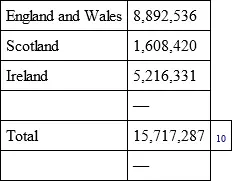
Примечание 1 10 10 G. Fr. Kolb, “The Condition of Nations,” &c.
One thing more was necessary before the dying giant expired, and that was to rectify the chronology of the century. 11 11 W. Toone, “The Chronological Historian.” – [When the Julian Calendar was introduced, the Vernal Equinox fell on the 25th of March. At the time of the Council of Nice, A.D. 325, it had retrograded to the 21st of March; and when the reformation was made in 1582, to the 11th of March. Pope Gregory XIII., to restore it to its place, directed ten days to be suppressed in the calendar; and as the use of the Julian intercalation was found to be three days in 400 years, he ordered the intercalation to be omitted in all the centenary years except those which were multiples of 400. According to Gregorian rule, therefore, every year of which the number is divisible by four, without a remainder, is a leap year, excepting the centenary years, which are only leap years when divisible by four, on suppressing the units and tens. Thus — 16(00) is a leap year. 17(00), 18(00), 19(00), are not leap years. 20(00) is a leap year. The shifting of days caused great disturbance in festivals dependent on Easter. Pope Gregory, in 1582, ordered the 5th of October to be called 15th of October; the Low Countries made 15th of December 25th of December. Spain, Portugal, and part of Italy, accepted the Gregorian change, but the Protestant countries and communities resisted up to 1700. In England the ten days’ difference had increased to eleven days, and the Act of 24 Geo. II. was passed to equalize the style in Great Britain and Ireland to the method now in use in all Christian countries, except Russia. In England, Wednesday, September 2, 1752, was followed by Thursday the 14th of September, and the New Style date of Easter-day came into use in 1753. — Note by John Westby Gibson, Esq., LL.D. ]
“From the 1st day of March last there has been a difference of twelve days between the old and new style, instead of eleven as formerly, in consequence of the regulations of the Act passed in 1752, according to which the year 1800 was only to be accounted a common year, and not a leap year; therefore old Lady-day was the 6th of April, old May-day 13th May, old Midsummer-day 6th July, old Lammas 13th August, old Michaelmas-day 11th October, &c., and so to continue for one hundred years.”
CHAPTER V
The Union with Ireland – Proclamations thereon – Alteration of Great Seal – Irish Member called to order (footnote) – Discovery of the Planet Ceres – Proclamation of General Fast – High price of meat, and prosperity of the farmers – Suffering of the French prisoners – Political dissatisfaction – John Horne Tooke – Feeding the French prisoners – Negotiations for Peace – Signing preliminaries – Illuminations – Methods of making the news known – Ratification of preliminaries – Treatment of General Lauriston by the mob – More Illuminations – Manifestation of joy at Falmouth – Lord Mayor’s banquet.
“LE ROI EST mort. Vive le Roi.” Ring the bells to welcome the baby Nineteenth Century, who is destined to utterly eclipse in renown all his ancestors.
Was it for good, or was it for evil, that its first act should be that of the Union with Ireland? It was compulsory, for it was a legacy bequeathed it. There were no national rejoicings. The new Standard was hoisted at the Tower, and at St. James’s, the new “Union” being flown from St. Martin’s steeple, and the Horse Guards; and, after the King and Privy Council had concluded the official recognition of the fact, both the Park and Tower guns fired a salute. The ceremonial had the merit, at least, of simplicity.
A long Royal Proclamation was issued, the principal points of which were: “We appoint and declare that our Royal Stile and Titles shall henceforth be accepted, taken, and used, as the same are set forth in manner and form following; that is to say, the same shall be expressed in the Latin tongue by these words, ‘ GEORGIUS TERTIUS, Dei Gratiâ, Britanniarum Rex, Fidei Defensor .’ And in the English tongue by these words, ‘GEORGE the THIRD, by the Grace of God, of the United Kingdom of Great Britain and Ireland, King, Defender of the Faith.’ And that the Arms or ensigns armorial of the said United Kingdom shall be quarterly – first and fourth, England; second, Scotland; third, Ireland; and it is our will and pleasure, that there shall be borne therewith, on an escocheon of pretence, the Arms of our dominions in Germany, ensigned with the Electoral bonnet. And it is our will and pleasure that the Standard of the said United Kingdom shall be the same quartering as are herein before declared to be the arms or ensigns armorial of the said United Kingdom, with the escocheon of pretence thereon, herein before described: and that the Union flag shall be azure, the Crosses-saltires of St. Andrew and St. Patrick quarterly per saltire countercharged argent and gules; the latter fimbriated of the second; surmounted by the Cross of St. George of the third, fimbriated as the saltire.” There is a curious memorial of these arms to be seen in a stained-glass window in the church of St. Edmund, King and Martyr, Lombard Street, which window was put up as a memento of the Union. In the above arms it is to be noticed that the fleur de lys , so long used as being typical of our former rule in France, is omitted. A new Great Seal was also made – the old one being defaced. 12 12 The Great Seal in use in 1800, was the fifth made during the reign of George III. Its Obverse was the King, in Roman costume, with flying mantle, on horseback, facing left hand. In his right hand he holds a marshal’s baton. Legend – both Obv. and Rev. “Georgius III. D.G. BRIT. FR. REX. F.D. BRVNS. ET. LVN. DVX. S.R.I.A.T. ET. PR. ELECT. ETC.” The Reverse has the King royally robed and crowned, seated on a throne, on the back of which is emblazoned the Royal arms. He holds the sceptre in his right, the orb in his left hand. He is surrounded by allegorical figures. On his right (heraldically) stand Hercules, typical of Power, Minerva, of Wisdom, and Justice with sword and scales; on his left are Britannia with spear, shield, and palm branch, and a female, figurative of piety, carrying the model of a church. The Seal of 1801 is identical, except that Britannianum is substituted for Brit., and Fr. is left out. Also in the Royal arms on the throne, the French fleur de lys is omitted, and the harp of Ireland is introduced. It is worthy of note, that the medallist has omitted the Cross of St. Patrick in Britannia’s shield, although proclaimed.
On January 1, 1801, the King issued a proclamation for holding the first Parliament under the Union, declaring that it should “on the said twenty-second day of January, one thousand, eight hundred and one, be holden, and sit for the dispatch of divers weighty and important affairs.”
Интервал:
Закладка:
Похожие книги на «The Dawn of the XIXth Century in England»
Представляем Вашему вниманию похожие книги на «The Dawn of the XIXth Century in England» списком для выбора. Мы отобрали схожую по названию и смыслу литературу в надежде предоставить читателям больше вариантов отыскать новые, интересные, ещё непрочитанные произведения.
Обсуждение, отзывы о книге «The Dawn of the XIXth Century in England» и просто собственные мнения читателей. Оставьте ваши комментарии, напишите, что Вы думаете о произведении, его смысле или главных героях. Укажите что конкретно понравилось, а что нет, и почему Вы так считаете.
